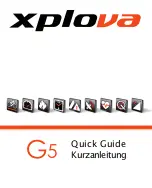
70
aftermarket “super light” Components
Think carefully about your rider profile as outlined
above. The more you fit the “shorten product
life” profile, the more you must question the use
of super light components. The more you fit the
“lengthen product life” profile, the more likely it is
that lighter components may be suitable for you.
Discuss your needs and your profile very honestly
with your retailer. Take these choices seriously
and understand that you are responsible for the
changes.
A great slogan to discuss with your retailer as you
consider changing components: “Strong, Light,
Cheap – Pick two.”
original equipment Components
Cannondale tests the fatigue life of the
components that are original equipment on your
bike. This means that the designs of original
equipment components have met our test criteria
and have reasonable fatigue life. It does not
mean that the original equipment components
will last forever. They will not.
stem
Clean and inspect carefully for cracks. Pay
particular attention to the underside of the stem.
If the stem is of welded construction, examine the
edges of each weld. See also the closely related
handlebar section below.
saddle
While the saddle is off the seat post, clean and
inspect the rails carefully for cracks. Check the
saddle rails to the saddle body; make sure that the
rails are firmly attached.
handlebars
Remove from stem. With road bars, you will
need to remove the handlebar tape. Remove
any handlebar mounted components. Clean and
inspect carefully for cracks. Pay particular attention
to the area where the handlebar emerges from the
stem. This is the area where virtually all handlebars
will eventually fail. Periodic replacement of all
handlebars is strongly recommended. How often
they need to be replaced depends upon the many
factors outlined above.
Be sure that you do not scratch or score the
surface of the handlebars with either the stem or
the brake or shifter levers. As noted above, any
such damage will reduce the life of the handlebar
and could lead to premature failure.
If you find that there is a sharp edge or burr on
the inside of the stem, right where the handlebars
emerge, it must be smoothed out with fine
sandpaper (220 grit or finer) before the handlebars
are reinstalled. Such a sharp edge or burr could
cause a scratching or scoring of the handlebar. As
noted above, any such damage will reduce the
life of the handlebar and could lead to premature
failure.
seat Post
Remove from seat tube and remove from saddle.
Disassemble the head/saddle clamp assembly.
Clean and inspect all parts carefully for cracks.
Pay particular attention to the bolt (or bolts)
that clamp the saddle in place. If the bolt looks
stretched, bent or in any way damaged, replace
it. Note that these bolts have been known to fail in
fatigue when not properly tightened. The threads
of the bolt and the seat tube of the frame must be
greased before reassembly.
Be sure the clamp assembly is clamped only to
the straight parallel part of the saddle rails.













































